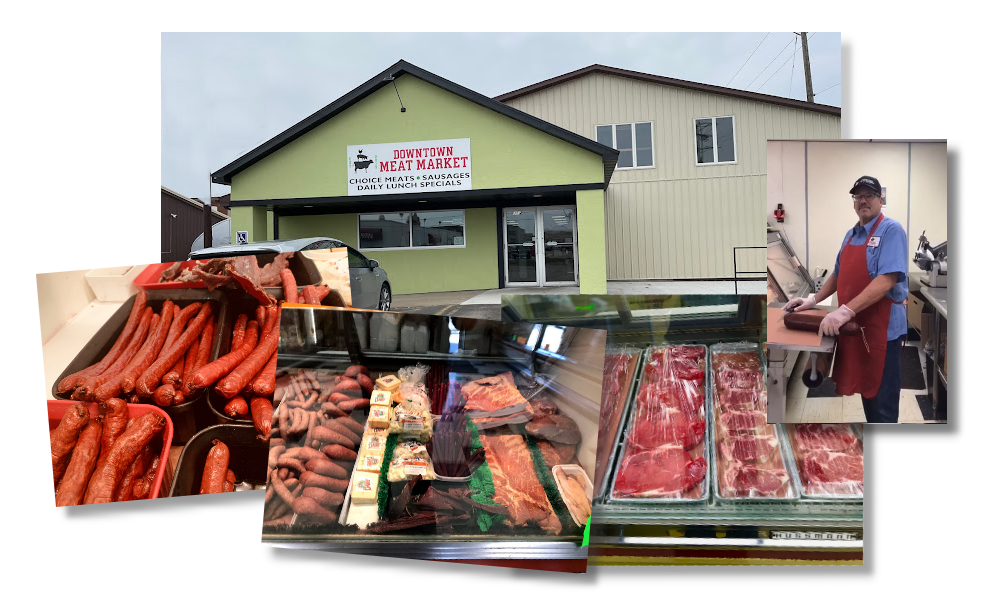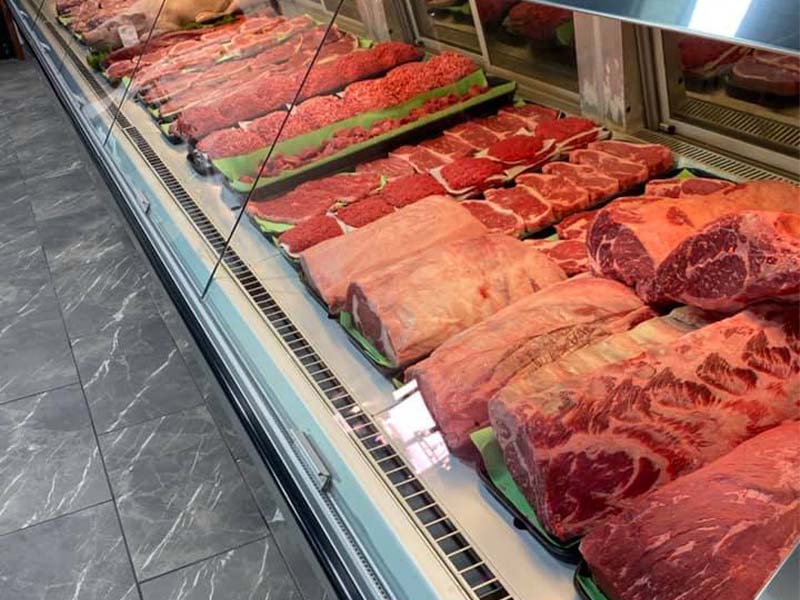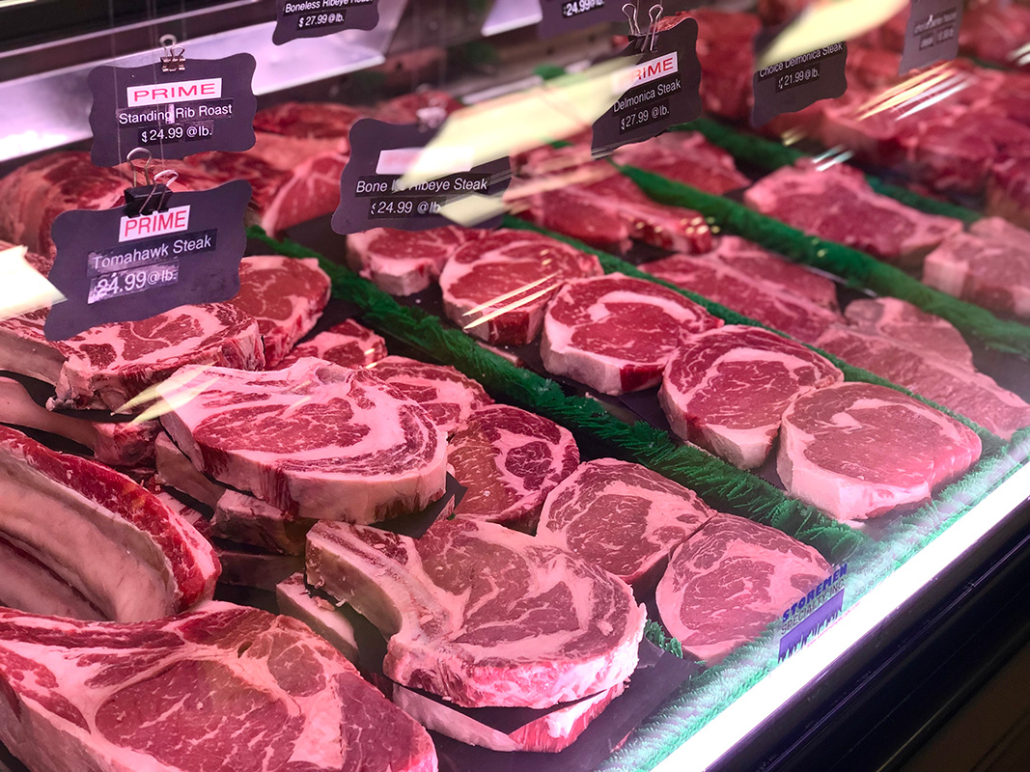Reveal the Art of the Butcher's Cut in a Modern Meat Market
In the ever-evolving landscape of modern meat markets, the butcher's cut has actually transcended its traditional origins, combining olden craftsmanship with contemporary practices. bagley farms meat market edwardsville il. Today's butchers are not just cpus of meat; they are experienced craftsmens who highlight sustainability and honest sourcing. Their experience in choose and preparing cuts tailored to specific cooking demands uses an unmatched eating experience. Yet, what genuinely sets the modern-day butcher apart is their ability to create a much deeper connection in between customers and the origins of their meat. Exactly how do these masters balance tradition with development, and what implications does this have for the future of meat intake?
Development of Butchery Strategies

The mid-20th century saw butchery strategies better improved by clinical insights into muscular tissue biology and meat aging, improving both inflammation and preference. Developments like vacuum packaging and refrigeration extended item shelf-life, enabling butchers to branch out offerings and improve quality assurance. This period additionally noted the increase of specialized equipment, such as band saws and meat slicers, which raised precision and effectiveness in meat processing.
The 21st century has presented digital technology right into the butchery realm. Computerized systems currently aid in monitoring animal provenance and optimizing cuts to fulfill particular customer choices. Additionally, a resurgence in artisanal butchery has emerged, mixing conventional abilities with contemporary knowledge to satisfy consumers looking for moral and sustainable meat alternatives. This development underscores a vibrant interplay in between tradition and technology, meeting modern needs while protecting the craft's heritage.

Recognizing Meat Cuts

Comprehending the intricacies of meat cuts is crucial for both butchers and customers seeking high quality and value. For butchers, exact cuts mirror skill and respect for the craft, making sure marginal waste and ideal yield.
The key groups of meat cuts include primal, sub-primal, and retail cuts. Butchers after that break these down better into sub-primal cuts, before ultimately creating retail cuts readily available to consumers, like ribeye or tenderloin.
Recognizing muscle make-up is vital; muscles utilized extra frequently by the animal often tend to be tougher and are best suited for sluggish cooking methods, while less-used muscle mass, like those located in the loin, are much more tender and perfect for cooking or roasting. Knowledge with these distinctions equips customers to make informed options, boosting their cooking endeavors.
Choosing High Quality Meat
Selecting the right meat involves greater than just choosing a visually enticing item from the screen. The art of selecting top quality meat requires check it out a critical eye and understanding of particular qualities that represent freshness and excellence. Pay focus to the color; beef needs to have a brilliant, cherry-red tone, while lamb ought to show a soft pink tone, and pork a pale pink. This indicates the meat is fresh and hasn't been exposed to oxygen for as well lengthy.
Secondly, think about the marbling, which refers to the white flecks of fat within the muscular tissue. Proper marbling is a crucial indicator of tenderness and taste, as it thaws throughout food preparation, enhancing the meat's juiciness. Bear in mind, greater marbling frequently associates with premium high quality cuts, such as USDA Prime.
Structure is an additional critical aspect; meat must feel firm to the touch, not slimy or excessively soft. Furthermore, bear in mind the aroma. Fresh meat should have a tidy, neutral odor, complimentary from any kind of sour or repulsive smells.
Coupling Cuts With Food Preparation Methods
Successfully coupling cuts of meat with the suitable cooking approaches is important for attaining ideal flavor and structure. These techniques boost the meat's all-natural tastes and ensure a juicy surface.
On the other hand, tougher cuts like brisket and chuck roast are abundant in collagen, which damages down right into jelly when cooked gradually. find out this here These cuts are ideal for braising or sluggish roasting, enabling the meat to tenderize over time and establish deep, complicated flavors. Cuts such as brief ribs and pork shoulder fare well with slow-cooking approaches, where extended cooking times change their robust textures right into succulent recipes.
Lamb shanks and oxtail, which require extended cooking to soften, are ideal candidates for stewing or slow simmering. These approaches coax out rich, passionate flavors while keeping wetness. By understanding the unique characteristics of each cut, cooks and home chefs alike can boost their culinary productions, guaranteeing each dish is both satisfying and remarkable.
The Butcher's Duty Today
Browsing the progressing landscape of the contemporary meat market, the butcher's duty today prolongs beyond plain preparation go to these guys of cuts. Contemporary butchers are culinary craftsmens, instructors, and advocates for sustainable techniques. They link the void between the farm and the fork by guaranteeing ethical sourcing, understanding animal husbandry, and prioritizing transparency in the supply chain. This change mirrors the growing customer demand for top quality over amount, where provenance and animal well-being are extremely important.
Along with crafting specific cuts, butchers currently engage directly with customers, providing cooking guidance and customizing choices to suit specific needs and choices. Their experience in meat aging, marbling, and flavor accounts empowers consumers to make enlightened choices, improving their culinary experiences. This tailored service exemplifies the butcher's evolving role as a trusted consultant in the cooking area.
Additionally, butchers are pivotal in minimizing waste, utilizing entire animals to produce varied products such as sausages and supplies - bagley farms meat market edwardsville il. This detailed technique not only values the animal yet also aligns with modern sustainability objectives. This way, the modern-day butcher personifies both tradition and technology, adapting to an ever-changing market while preserving the virtuosity and stability of their craft

Verdict
Mastery in recognizing diverse meat cuts and top quality indications encourages butchers to provide informed suggestions, straightening certain cuts with optimum food preparation techniques. By honoring historic techniques while embracing modern demands, the butcher's duty stays vital in today's sophisticated meat market.